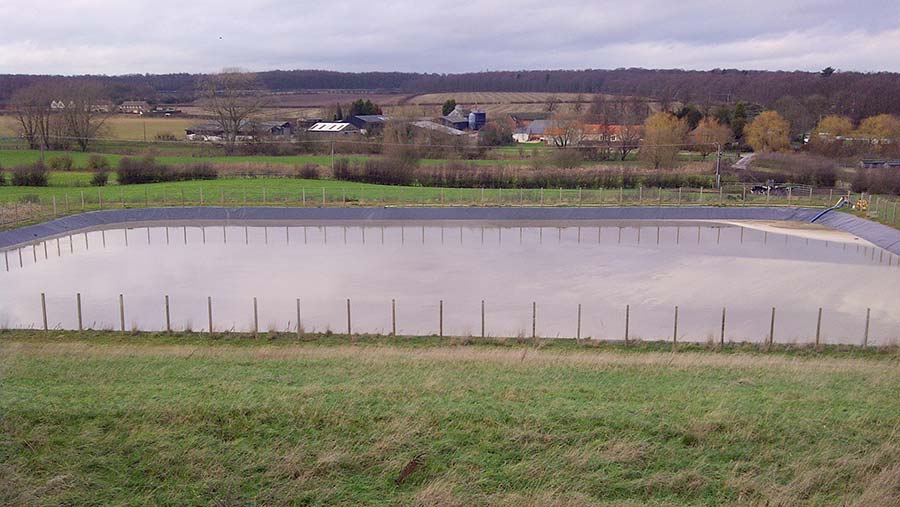Advice on planning your slurry storage requirements
 Slurry lagoon
Slurry lagoon With the Welsh government proposing to introduce its Agricultural Pollution Measures regulations across Wales farmers will need to review their slurry storage and weigh up options to tackle any under-capacity.
The pan-Wales regulations, which could be introduced in January 2020, have been met with fierce criticism from Welsh farming unions who say they will be disastrous if they go ahead.
The proposed regulations for Wales are almost identical to England’s NVZ rules (introduced in 2002) and would:
- prevent farmers from spreading slurry during certain months of the year. Solid, stackable farmyard manure, however, can be stored elsewhere and isn’t subject to the closed spreading period.
- require a five-month slurry storage capacity.
- restrict total manure nitrogen production to 170kg/ha averaged over the whole farm.
See also: Guide to safe storage and spreading of slurry and fertiliser
David Ball, AHDB senior manager, environments and buildings, says before committing to any capital expenditure farmers should explore other options.
“Slurry production is a major issue on most farms due to the high cost of providing storage and the cost of spreading.”

David Ball © AHDB
Using Slurry Wizard to help
As a first step Mr Ball says farmers should use AHDB’s recently updated Slurry Wizard tool to calculate how much slurry their farm produces and work out their storage requirements.
The downloadable, online tool uses basic farm data inputs to work out minimum slurry storage requirements to ensure farmers are compliant with regulations.
Using the tool, different storage scenarios and solutions can be explored to improve storage capacity including:
- redirecting rainwater
- roofing dirty yards
- installing a slurry separator
- investing in new capacity
- or reducing stock numbers.
Providing additional capacity when making changes to the storage or the farm enterprises allows farmers to store slurry beyond the minimum period and make the best use of this valuable resource.
Slurry is worth around £4/cu metre (£18 per 1,000 gallons) in total N,P and K content, according to AHDB’s Nutrient Management Guide RB209 and current fertiliser values.
“Making these nutrients available to the crop is dependent on timing and method of application, so flexibility in timing of spreading by providing ample storage capacity is key to optimising its value.”
“Whatever the scenario, farmers should plan ahead, evaluate their options and understand the physical and financial implications for their farm business,” advises Mr Ball.
What is Slurry Wizard?
- A downloadable online tool that uses basic farm data to work out minimum slurry storage requirements to comply with regulations
- Costs and benefits of changes to infrastructure or system can be estimated before any capital outlay
- Farmers can assess the impact of increasing herd size, moving from straw yards to cubicles, introducing outside loafing areas, changing the housing period and dirty water management.
- Calculates the total amount of nitrogen produced by all farm livestock.
- Incorporates expected rainfall data.
Access the Slurry Wizard on the AHDB website
What’s new?
- Previously farmers will have been using average rainfall calculation. The Environment Agency has identified this as a potential weakness and is requesting modified rainfall data is used that quantifies expected rainfall using information that anticipates the wetter-than-average year. These new formulas predicting rainfall are built into the wizard and have been accepted by the EA to demonstrate compliance and plan new storage facilities.
- The previous version calculated the volume of a slurry lagoon by simply multiplying length by width by depth. Most dug-out lagoons have sloping sides so the shape is a prismoid. The formula for calculating the volume of a prismoid has been incorporated into the tool for a more accurate reflection of the capacity.The rules state that a lagoon must have 750mm of freeboard. i.e. the top 750mm of the lagoon should be left for emergencies and any ‘choppy’ surface waters, so cannot be counted as useable volume. This 750mm is also taken in to account in the volume calculation.
